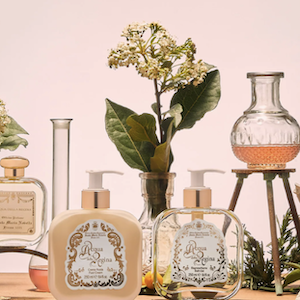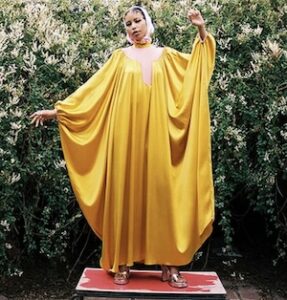One Man’s War: Four Corners and the Photomontage of John Heartfield
By Mary Wheelehan
On October 31st, 2019, the UK intended to leave the European Union. Another delay prevented the departure, but again, the British public—and the world—had held its breath in anticipation. In the 2016 introduction to her bestselling novel, The Handmaid’s Tale, Margaret Atwood quotes a timeless aphorism: “History doesn’t repeat itself, but it often rhymes.” It appears that the present, indeed, is rhyming with history.
Also on October 31st, a new art exhibition opened in London. That evening in Tower Hamlets, the Four Corners Gallery debuted One Man’s War, an art display dedicated to the photomontage work of John Heartfield, Berlin Dadaist, communist, and a staunch anti-fascist in Weimar and Nazi Germany. The Four Corners chose its opening date intentionally; Britain’s official exit from the EU was a highly political day, and Heartfield’s artwork is decidedly political. One might say the work rhymes.
Heartfield believed wholeheartedly that art was intended to shape social change, and his work did that in part by changing art itself. During the interwar period, Heartfield was instrumental in pioneering a new form of art that came to define his signature, bitingly satirical style: photomontage. By cutting and combining crisp images from newsprint, advertisements, and his own photographs, Heartfield created entirely new images of satire and juxtaposition, using the new form of art to emphasize its political function.

Should Men Fall Again that Shares May Rise?!
Heartfield’s membership in the Berlin Dada Club was also significant to his work in photomontage, which quickly became an essential genre of Dada. Photomontage was a new and creative form, entirely contradictory to the mainstream Romantic art that avant-garde artists fought to resist. Many Dada artists also found photomontage to be more appropriate for communist messages, like those Heartfield was sharing; its construction felt more industrialized, more proletariat than other, more bourgeois styles of art. Photomontage was revolutionary, subversive, and like the Berlin Dada movement—and the Zurich Dada movement that had inspired it—it marked a revulsion toward the status quo that had resulted in the first global war.
For Heartfield in particular, photomontage became a way to share the ideology of that revulsion using juxtaposition, often between capitalist or Nazi propaganda and reality. In Weimar Germany, Heartfield produced photomontages as campaign posters for his political party, the KPD, Germany’s communist party. Many of these feature juxtapositions between the consequences of World War I for the proletariat and the powerful capitalists; ordinary people suffered, but the wealthy made millions. Voting communist, Heartfield’s photomontage suggested, was the only way to prevent the ruling class from starting another war with similar results.
When it appeared that a second world war was, in fact, approaching, as Hitler gained political influence in Germany, Heartfield’s communist photomontages targeted him and the Nazi Party. The Meaning of the Hitler Salute, for example, shows Hitler’s infamous salute, but with a twist; Hitler’s outstretched hand is receiving money from the capitalist elite, suggesting that it was millions of dollars of capitalist investment that supported Hitler’s rise to power, rather than millions of everyday citizens.

The Meaning of the Hitler Salute
“Motto: Millions stand behind me”
“Little Man asks for big gifts”
When Hitler was appointed chancellor in 1933, Heartfield’s political art endangered his safety, and he was forced to flee to Prague as a political refugee to avoid arrest by the Gestapo. The threats to his life did not stop him from creating more political photomontages. While in exile, Heartfield continued working, contributing to the German communist publication, Worker’s Illustrated Journal. Like his previous work, these images were powerfully critical of Hitler’s new regime, and Nazi Germany quickly demanded that the Czech government return Heartfield to German custody. Once again in unsafe territory, Heartfield left Prague for London. He made his decision at the right time; when the Nazis invaded Czechoslovakia in 1939, Heartfield was fifth on the Gestapo’s most-wanted list.

Blood and Iron
“Blood and iron: the old motto of the New Empire”
In the safety of London, Heartfield continued his work, but it was received somewhat differently by his new British audience. Despite his fame in the rest of Europe, Heartfield’s photomontage was little known in England, and audiences there were more accustomed to humorous caricatures of Hitler, rather than Heartfield’s darkly satirical take.
Despite receiving relatively little recognition with the British crowd, Heartfield kept working, uniting with other German-speaking artists and émigrés to create the Free German League of Culture, an anti-fascist group. The group hosted German art events around London, reminding the British public—and the world—that real German culture was not what Hitler’s Nazi Party suggested.
Unfortunately, the British government did not share the same view. In 1940, Heartfield—along with other immigrants of German, Austrian, and Italian descent, including Jewish people fleeing concentration camps—was declared an enemy alien of the state and interned at the Isle of Man. As Winston Churchill reportedly said at the time, British policy was to “collar the lot”. Heartfield was released from custody after six weeks due to poor health, but he was forbidden from working for three years.
After the war, in 1950, Heartfield moved back to East Germany. Despite his obvious and lifelong ties to the Communist Party, he still faced difficulties returning home. State-sanctioned art was the aesthetic of socialist-realism, which used the painting techniques of realism to present an intensely optimistic viewpoint of Stalin and communism. It ultimately amounted to state propaganda. Heartfield’s photomontages, critical as ever, did not resemble this art, and he faced government scrutiny before he could return to his home. Finally allowed reentry into Germany, Heartfield worked in relative obscurity before Stalin’s death in 1953, after which Bertolt Brecht intervened to have Heartfield inducted into the East Berlin Academy of the Arts.

The Hand Has Five Fingers
“Five fingers has the hand! With these five grab the enemy!”
Heartfield, by then 76 years old, died in 1968, just before a planned trip to Britain to plan a new art exhibition. In the same year, however, Heartfield’s art was reborn. Rediscovered by activists, particularly by anti-war demonstrators, his photomontages became symbols for a new generation. In the years since, Heartfield’s artwork has continually been renewed this way; somehow, despite its age, it is never old.
Now, through the efforts of the Four Corners Gallery, it is on display in London, viewable for another generation. One Man’s War is the story of John Heartfield, told through the dozens of photomontages he created and the work of later activists he inspired.

War and Corpses: The Last Hope of the Rich
As a refugee in Britain, John Heartfield helped to shape cultural attitudes, and he is one of many to do so. Some of these refugee artists will be featured alongside Heartfield in the Four Corners’s winter/spring exhibition theme, Another Eye, which is dedicated to the work of migrants and refugees who came to Britain from the 1930s to the present day.
Following Another Man’s War, beginning in February 2020, is Women Exile Photographers, exhibiting the photography of refugees Dorothy Bohm, Gerti Deutsch, and Lotte Meitner-Graf, among others. In the current climate of anti-immigrant and anti-refugee rhetoric, Another Eye highlights the contributions made by refugees of yesterday and today, using the humanity of art to remind audiences of the people behind the politics.
Until February 2020 at the Four Corners Gallery, Heartfield’s photomontages take the spotlight, cutting and dark like ink. Moving through the One Man’s War exhibition, reading Heartfield’s political messages made for social change, is like moving through time. But, as the Four Corners Gallery asks us to question, are we revisiting the past by experiencing Heartfield’s work, or are we seeing the present?

Never Again!
Information about the Four Corners’s Another Eye exhibition, featuring One Man’s War and Women Exile Photographers, can be found here: https://www.fourcornersfilm.co.uk/another-eye





